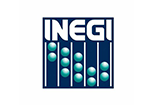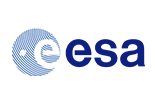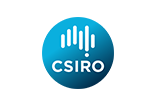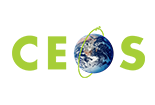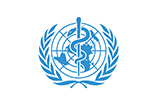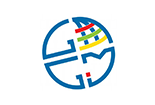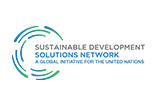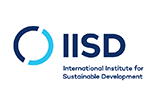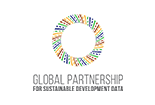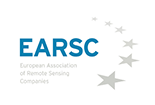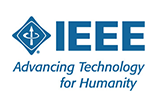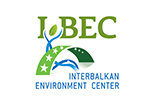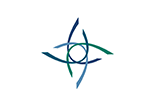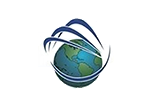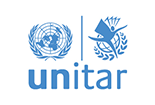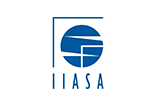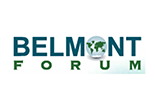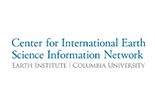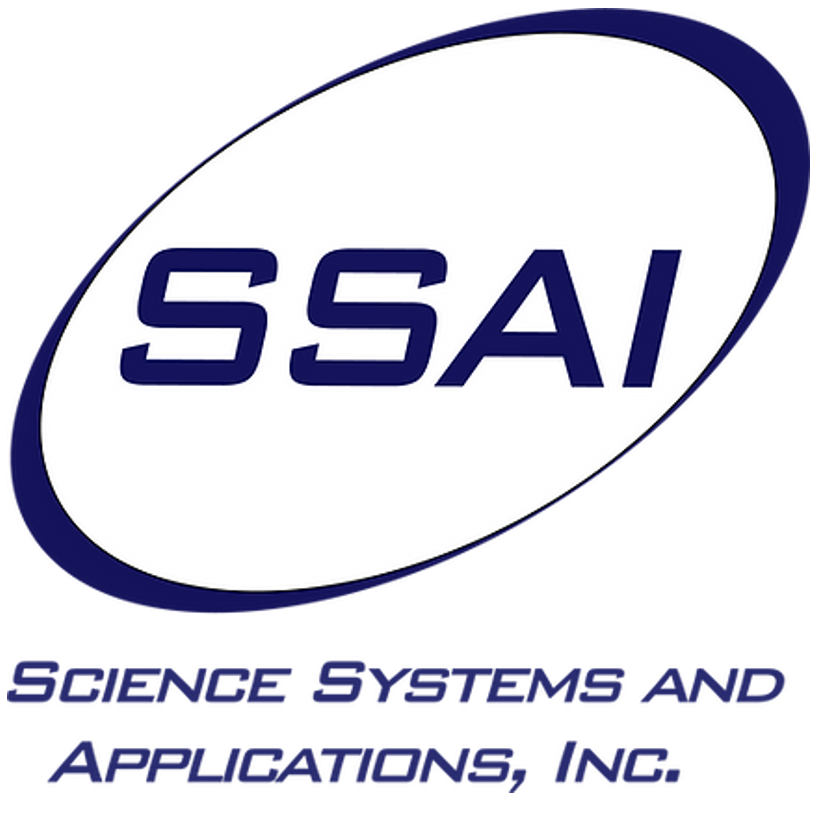Space and Sustainability Colloquium 2023: An Overview
Sabrina Delgado Arias, a research scientist specializing in Earth science applications for decision-making. She is currently Associate Program Manager for the NASA Ecological Conservation and Equity and Environmental Justice Programs, and Program Coordinator for the NASA Mission Engagement Program.
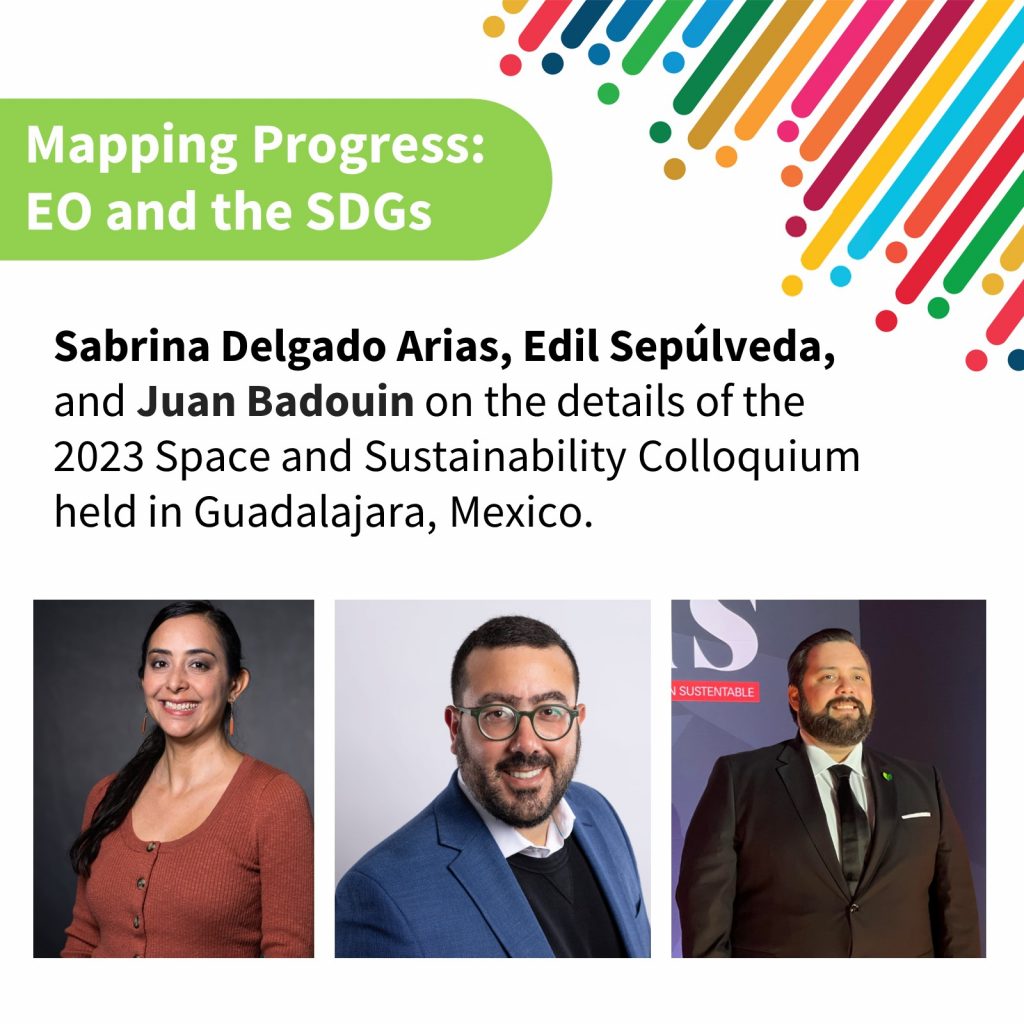
Edil Sepúlveda Carlo, a senior research scientist at NASA Goddard Space Flight Center for the past several years, where he has worked as the Applications Coordinator for NASA’s Carbon Monitoring System (CMS) Initiative. He has also been the Co-Chair for the Applied Earth Observations Innovation Partnership (AEOIP) between NASA & USDA Forest Service, and led other stakeholder focus initiatives.
Juan Badouin, a leader of the Eugenio Garza Lagüera Entrepreneurship Institute at Tecnológico de Monterrey North Sonora campus. He specializes in artificial intelligence, remote sensing and geographic information systems working with natural resources, education, sustainability and precision agriculture.
Space and Sustainability Colloquium
It is difficult to say what is impossible, for the dream of yesterday is the hope of today and the reality of tomorrow. – Robert H. Goddard.
Working at NASA is a constant reminder that possibilities are endless. With a current fleet of 21 space-based Earth Science Missions and 7 International Space Station instruments, it is now possible to observe and study our Earth’s interconnected systems and long-term changes better than ever before. We can observe the changes in remote regions of the Earth where in-situ information was once scarce or not attainable. We can produce consistent measurements for entire countries overcoming limitations with airborne collections. Our Earth observing-satellite and airborne mission data are also enabling improved decision-making regionally and globally—from informing natural hazard warning and recovery, to sea level rise mitigation, to food security and water management.
However, understanding how to use NASA Earth observations for practical applications—particularly those that align or contribute to the United Nations Sustainable Development Goals—is not always evident. The variety of datasets available, new measurement concepts used to obtain the data, and the multiple locations, tools, and formats available to access the information can be a challenge for users seeking to transform a great idea to reality. Especially for those with limited time and personnel resources.
In November 2023, NASA partnered with Precisión Agrícola and Rubisco to address this challenge in Mexico, by holding the first international Colloquium on Space and Sustainability in Guadalajara, Mexico. The main objective of the colloquium was to strengthen knowledge in Mexico on how NASA missions and programs can contribute to the UN Sustainable Development Goals (SDGs), particularly in sustainability efforts. While this event helped expand possibilities for addressing many of the SDGs, it served as a specifically great example to advance SDG 16 on promoting peaceful societies for sustainable development. More specifically, the colloquium bolstered Target 16.7: to ensure responsive, inclusive, participatory, and representative decision-making at all levels. What follows highlights some of the specifics of the colloquium including projects and speakers, as well as outcomes for the broader community.
The Colloquium

Approximately 100 people from the private sector, local government, academia, and civil society organizations in Mexico, as well as representatives from NASA and US organizations, came together in Guadalajara for the first International Colloquium on Space and Sustainability. The colloquium, hosted from November 14th to the 16th, was met with enthusiasm by Jalisco’s Secretary of Innovation, Science and Technology, Alfonso Pompa Padilla, who provided opening remarks for the event. The Secretary celebrated Jalisco’s position at the forefront of space research and technology and stressed the importance of supporting continued local capacity building in this area.
To set the scene, the colloquium kicked off with a series of talks highlighting efforts across organizations to contribute to sustainable development.
-
- Meeting societal needs: Christina Moats-Xavier, Program Manager for Mission Engagement, provided an overview of NASA’s new Earth Science to Action Strategy and examples of how NASA data are helping communities around the world. The strategy centers on fostering bottom-up approaches for enabling feedback loops with users, as well as on scaling up efforts and building bridges to meet societal needs.
-
- Increasing capacity building: Johana Carmona García, General Secretary of the Society for Remote Sensing and Spatial Information Systems (SELPER, in Spanish), talked about the society’s role to promote remote sensing and capacity building activities for its members in Latin America. She shared how SELPER members have used NASA observations towards informing the SDGs in projects developed from 2021 to 2023. She also identified three overarching needs: increased capacity building, improved flow of information—particularly for disasters—and the need for higher temporal and spatial resolution data.
-
- Improving accessibility: Laura Iglesias, Coordinator of Strategic Alliances for UNESCO Mexico, highlighted Physicist Ana Maria Cetto’s UNESCO-Kalinga Prize. The award was presented to Cetto on November 13 for her dedication to making scientific knowledge more accessible to the masses—having translated scientific outreach materials into ten of Mexico’s Indigenous languages. She also identified several priorities from the SDG Report 2023 including strengthening the science-political-society interface to apply science, technology, and innovation towards advancement of the SDGs.
- Improving accessibility: Laura Iglesias, Coordinator of Strategic Alliances for UNESCO Mexico, highlighted Physicist Ana Maria Cetto’s UNESCO-Kalinga Prize. The award was presented to Cetto on November 13 for her dedication to making scientific knowledge more accessible to the masses—having translated scientific outreach materials into ten of Mexico’s Indigenous languages. She also identified several priorities from the SDG Report 2023 including strengthening the science-political-society interface to apply science, technology, and innovation towards advancement of the SDGs.
-
- Celebrating and facilitating progress: Argyro Kavvada, U.S. Greenhouse Gas Center Program Manager, presented on Earth Observations for Sustainable Goals (EO4SDG) activities, including efforts to recognize organizations, institutions, and countries for their novel, impactful EO applications for SDG achievement. She also introduced the Earth Observations Toolkit for Sustainable Cities and Human Settlements, which works to provide free and accessible data to the public with regards to the SDGs.

Once the context was set, the colloquium followed with a panel on perspectives for the monitoring of carbon in Mexico, a roundtable on user perspectives for land observations, and a demonstration of the functionalities and use of NASA’s Ice, Cloud, and land Elevation Satellite-2 (ICESat-2) and the Global Ecosystem Dynamics Investigation (GEDI) datasets for various land applications. A presentation on NASA’s Multi-mission Algorithm and Analysis Platform (MAAP), as well as the Visualization, Exploration and Data Analysis (VEDA) then fostered a discussion on data access, visualization, and harmonization. Day 1 closed with a value-creation exercise led by the C-Minds Think Tank. The exercise provided valuable insights into the local capacity for adopting and adapting space technologies for sustainable development. It also provided new perspectives on the value that participants give to Earth observations in their jobs.

The second day of the colloquium kicked-off with a panel featuring Carlos Mendieta Cerón (President, UN Global Compact Mexico), who spoke about the role of private companies in implementing the UN principles. Also, Juan Fernández del Valle Bickel (Food and Agriculture Organization), who spoke about strategic chains for agroecological zoning in Jalisco. We then shifted focus to capacity building. Brian Campbell (Senior Earth Science Outreach and Education Manager and NASA GLOBE Science Lead), Peder Nelson (Oregon State University and the lead for GLOBE Observer Land Cover Science), and Alejandra González Jiménez (Citizen Empower Coordinator at Reforestamos México) participated in a session on space and citizen science. They introduced various projects that participants could contribute to including the GLOBE Trees program, which compares ICESat-2 tree height observations with those collected by citizen scientists, and the Reforestamos México Network for Urban Trees, which invites citizens to monitor, research, and restore trees in their urban environment.

The colloquium concluded with two parallel tutorials. One was led by Guillermo Murray Totarolo (Institute for Ecosystems and Sustainability Research, Universidad Nacional Autónoma de México) on using carbon models and data from NASA’s Carbon Monitoring System (CMS) Initiative to build greenhouse gas inventories. The second session brought together representatives from NASA’s Data Distributed Active Archive Centers at NSIDC and ORNL, the University of Maryland, CryoCloud, and Icepyx for a demonstration of access and discovery of ICESat-2 and GEDI data.

Key Outcomes
The International Colloquium on Space and Sustainability was developed as a collaboration with NASA to foster discussion in Mexico about the current state of the use of Earth observation technology and its potential applications for sustainability, including data from ICESat-2, GEDI, and the CMS Initiative.
The colloquium had 7 main objectives:
- Provide an overview of NASA’s instruments, data, science, and mission applications.
- Present examples of how NASA Earth observations are already being used in Mexico for practical applications.
- Explore the needs of current and potential data users and identify best practices for integrating NASA Earth science in decision-making projects.
- Build capacity for exploring, accessing, and customizing NASA data.
- Foster multidisciplinary collaboration (strategic alliances) for decision-making to address sustainable development goals using data, science, and resources from NASA missions.
- Foster a community of citizen scientists interested in combining NASA data observations and ground-based information to monitor local environmental changes.
- Promote and document the findings and achievements of the colloquium to serve as a reference guide for government, companies, academia, and NGO’s in meeting their sustainability and environmental objectives.
Below are some of the key outcomes from implementing these objectives. Overall, the colloquium:
- Facilitated a gathering of NASA representatives with a range of speakers and participants from private sector, local government, academia, and civil society organizations in Mexico. This was exemplified particularly during the panel on perspectives for the monitoring of carbon in Mexico, which was praised for having key representation across sectors.
-
- José Martín Hernández, Universidad Autónoma de Baja California (UABC), Programa Mexicano del Carbono (PMC)
- Denitza Gonzalez Quiñonez, MÉXICO2: Plataforma Mexicana de Carbono
- José Armando Alanís, Comisión Nacional Forestal (CONAFOR)
- Fabiola Ramirez Hernandez, Instituto Nacional de Ecología y Cambio Climático (INECC)
- Guillermo Murray Totarolo, Universidad Nacional Autónoma de México
- Moderator: Rodrigo Vargas, University of Delaware
-
- Put forward an interdisciplinary approach that includes art and education. Artist Ana Madrid renders a painting during the colloquium which she presented to NASA Program Manager, Christina Moats-Xavier. Image Credit: Juan Isaac Gámez Badouin, Tec de Monterrey.
-
- Artist Ana Madrid (@arteanamadrid) joined the colloquium as a participant and special guest. Inspired by the discussions she participated in, Ana created a painting on a hexagonal-shaped canvas modeled after one of the James Webb Space beryllium mirrors, which she presented as a gift to NASA’s Christian Moats-Xavier. The painting is part of an artistic series called “Desierto Espacial” (@desierto_aerospacial), which celebrates the arid ecosystems of Sonora as a breeding ground for space careers in Mexico. The series was created by Juan Isaac Gámez Badouin, who co-lead the organization of the colloquium.
- The NASA Space Apps Challenge global finalists from Hermosillo—Rocket Hacks, also joined the colloquium. The university students presented and solicited feedback on their work to advance wildfire prediction and to make warning advisories accessible to communities without internet or connectivity.
-
- Provided new insights with respect to the context of decision making in Mexico.
-
- Engagement with humility: participants appreciated that the colloquium acted as a forum to exchange information on the utility of Earth observations for decision making. An experience that some of the participants have had in their engagement with western scientists, is being told how to apply the data instead of encountering a willingness to learn about what is being done with the data—something that was compared to a form of information imperialism.
- Increasing visibility: Participants also appreciated the opportunity to increase awareness of major challenges being addressed with Earth observation data. Heriberto Padilla from Guardián Forestal—a civil society led initiative—was among the colloquium participants who shed light on how Earth observations are being used to monitor deforestation due to illegal avocado cultivation. Sentinel 1,2a,2b and Landsat 8/9 combined with high resolution base maps from Norway’s International Climate and Forests Initiative, are used by Guardián Forestal to help prioritize alerts and generate automatic complaints to judicial authorities in the state of Michoacán.Illegal cultivation of avocado has caused significant economic, social and environmental impacts in Mexico, including threatening the safety of people who work in this area. The availability of high-resolution satellite instruments has allowed for improved monitoring of forest cover loss and for development of an alert system used to verify illegal activity. However, hundreds of thousands of alerts are received across the major avocado-producing municipalities making it essential to prioritize action.
-
- Fostered co-production: The discussions, roundtables, tutorials, and value-creation exercise provided a great opportunity to share ideas and insights on the use of Earth observations for applications aligned with the SDGs. This collaboration enabled us to acknowledge what has been done, increase knowledge on the functionality of the data and on new initiatives, and strengthen connections for future engagement.
Sustainability science for kids!

Brian Campbell was also the guest of honor at the Inauguration of Precicisión Agricola’s Technology and Capacity Building STEAM Innovation Lab Center (for kids ages 6-12 years old) in Jalisco (Cañadas de Obregón) where a plaque is revealed with a quote from Brian that said the following: “Science is a universal language. A language that is easy for some and hard for others. It is language that every person in the world can and should speak, from the young student just learning about the world around them, to the adult who has seen how science has changed the world. Science is spoken everywhere, whether we hear it or not.” – Brian A. Campbell, NASA Senior Earth Science Specialist

Linking Space and sustainability with NASA Space Apps, the case of Stellarisoft: A Journey from Hackathons to Sustainability
In October 2023, a team of four brilliant students from Unison and Tec de Monterrey, known as Stellarisoft, embarked on a journey that would transform their understanding of Earth observation and its potential to address real-world challenges.
They participated at the NASA Space Apps Challenge in Hermosillo, Sonora, México, where they tackled the issue of 3D representation of lunar earthquakes. Igniting their passion to explore the intersection of space technology and sustainability.

In March 2024, Inspired by a talk by Brian Campbell and Peder Nelson from NASA GLOBE (who were exponents of the colloquium and thanks to him we were able to link them to give a talk at the hackathon) at the Smart City Hackathon in Hermosillo, Stellarisoft shifted their focus to developing a solution for urban heat islands. They transformed their idea into a software called Orbe Urbano, a powerful tool that could monitor and manage urban heat and tree cover to mitigate these environmental challenges.
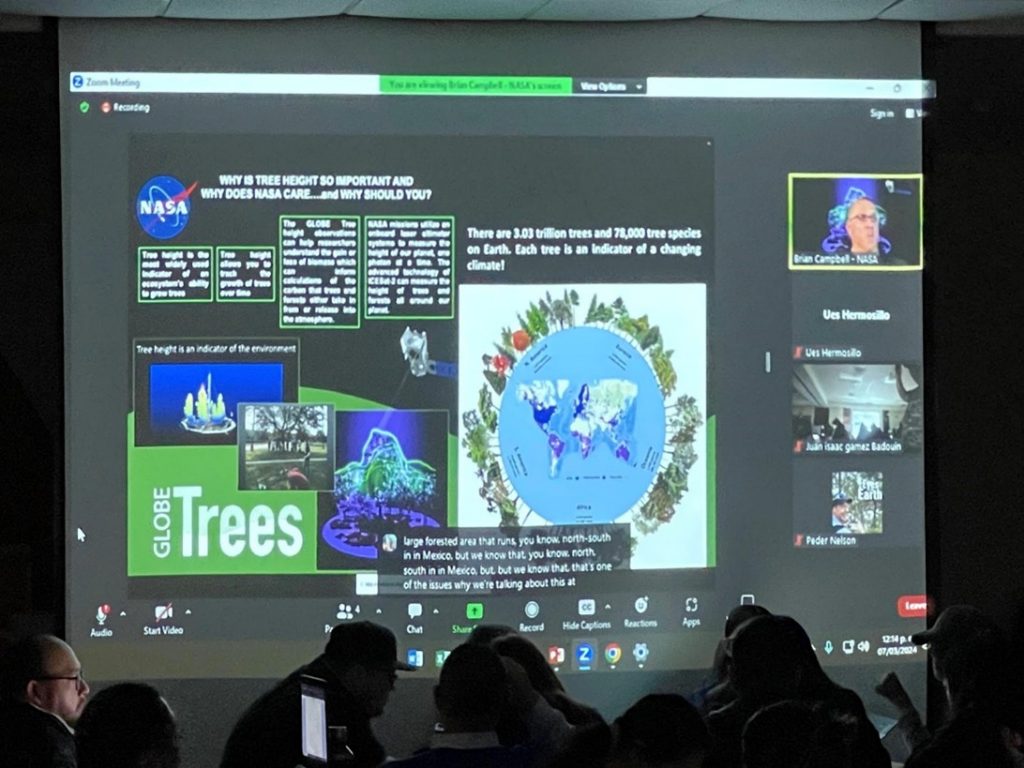
Their hard work and dedication paid off when they presented Orbe Urbano to the director of Hermosillo’s Cadastre, Rubén Dessens , who was immediately impressed by its potential to make a real impact on the city.
Stellarisoft’s story highlights the power of collaboration, mentorship, and hackathons like NASA Space Apps to empower young minds to tackle real-world challenges using Earth observation data. Their journey from a hackathon project to a potential business venture is an inspiration to innovators worldwide. This is accompanied by the leader of the entrepreneurship institute of the Sonora Norte campus of the Technological Institute of Monterrey, Juan Isaac Gámez Badouin, who has followed up and enrolled Stellarisfot in the center of excellence for scientific and technological-based entrepreneurship (https://tec.mx/es/emprendimiento).
The Stellarisoft team’s success demonstrates the impact of linking the Colloquium with hackathons such as NASA Space Apps for empowering young minds to address real-world challenges using Earth observation data.
AEOIP 2024 Workshop: Sharing Experiences in Earth Observation Applications for Sustainability
In April 2024, Juan Isaac Gámez Badouin, had the opportunity to participate in the Applied Earth Observations Innovation Partnership (AEOIP) Workshop in Ann Arbor, Michigan. The workshop brought together experts from around the world to discuss the latest advancements in Earth observation (EO) technology and its applications for sustainable development.
Sharing Experiences from Mexico
As part of the workshop, Juan presented a poster highlighting the experiences of the Colloquium in Mexico.
Strengthening Technology Transfer
The colloquium has also played a valuable role in strengthening the transfer of EO experience and technology between Mexico and the United States.

Moving Forward
This first international Space and Sustainability Colloquium fostered the idea put forth by Agenda 21 that everyone is a user and provider of information. It provided an opportunity to hear first-hand the perspectives, experiences and challenges of using Earth observations for decision making from representatives of a broad range of disciplines and sectors in Mexico.
The colloquium also provided an opportunity for capacity building. By creating awareness of the freely and openly available data provided by NASA, we strengthened the means for stakeholders to make informed decisions to advance sustainable development across their communities and to meet the SDG target(s).
A second colloquium is now being planned for 2024 to continue strengthening connections for a more effective use of Earth observations in policy-and decision-making processes—and to continue nurturing great ideas to reality!
Date Published: May 23, 2024





